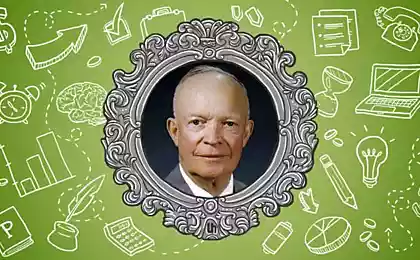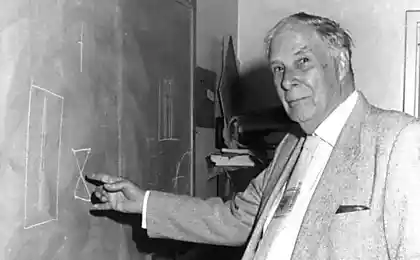1428
How formal management ruined an entire department

Formal management is essential when managing large projects. It allows you to structure and organize work and relationships in a controlled team or organization. However, if formal management, in the first place, in setting goals and objectives for oneself and subordinates, crosses a certain point of no return, it begins to destructively affect work and reduces efficiency. It is this story, about the distorted excessive formalism of the fulfillment of the goals for the development of the department by management that I want to tell you.
Goals: classic. To improve the quality of work, efficiency, to bring the department to a new level as a whole.
It is no secret that each new leader reshapes the department, one way or another, “for himself”. So in this story, dear reader, we suffered the same fate. The young and promising head was torn apart from two existing departments within the department and a third was created. To the age-old question “why?” I probably have only one answer: it is easier to create narrowly focused specialists than general specialists.
One thing is certain. Setting goals and choosing methods that are divorced from reality is the most terrifying thing that can happen to you. Overall, there were two global goals.
Target one. As the main tool for debugging work processes, a formal, I would even say book-formal type of management was chosen. I think everyone who worked in a more or less large team can confirm that next to the working atmosphere and working order there is the same working, from the point of view of the manager, chaos: morning coffee at the smoking room, group runs for tea and cookies in the kitchen, harassment of the chief of work in the corridors, solving burning issues through personal communication with the management, not related to the work of Skype conference for communication, funny pictures and videos. If you have a young, active male team, then, in fact, all this is inevitable. So how do you manage the chaos that's happening when you think it undermines efficiency? Correct, formalize workflow and workflow.
In large companies very much like verticals, it is understandable. A huge flow of information in the form of tasks and problems in the direction of managers must be somehow filtered and streamlined, otherwise they will be overwhelmed to the very top, you will not dig out. First of all, junior management is formed: local bosses and senior shifts, in fact, teamlids and a group of their deputies are organized.
Unfortunately, some leaders may not take into account the fact that the team leader and his assistant should be not only good executors and mouthpieces of his will, but also respected specialists and hard-working “fighters” of his field of activity. But subordinates should respect their leadership, and the best respect is the recognition of professionalism and experience. Timlid, who is only the executor of the will of the head, but is not a cool specialist in the field he supervised, turns for the team from “father and mentor” into an annoying obstacle. He needs to explain and chew everything three times. Due to the lack of professional experience, such people will only slow down the solution of problems, because they are constantly in doubt whether they are doing the right thing professionally or not.
And here comes the first devil, hiding, as you know, in the details. The vertical of managers is organized in order to reduce the load from the final manager, leaving him exclusively the functionality of sighting and monitoring work processes. With the rigid formalization of work processes, and, first of all, the processes of solving problems by using the “vertical of power”, additional links are created. If these very links do not have sufficient qualifications to make independent decisions, they only delay the decision-making process, because at the exit, instead of seeing and observing, the head receives only a “spoiled phone”.
The employee needs one thing, the team leader understands another, and the manager hears the third. As a result, we get a collapse, since, to understand what is happening, you almost have to collect a rally (remember, we have formalized processes), and discuss the problem with a cozy trinity of an employee-timlead manager, or even wait for a general meeting of the department.
Each of us faced a situation when to make any decision it is necessary to receive the blessing of the authorities. This is correct, since the ultimate responsibility lies directly with the manager. Here comes the second devil of detail: scaling up the problems we need to look at.
If the management closes the solution of all issues, at least minimally beyond the boundaries of the statistical “normal”, it paralyzes its own work, simultaneously tying the hands of specialists in the field. This situation forces to resort to the use of a curved vertical. Recalling the “broken phone” effect, we end up with a huge lag, up to a week, in making decisions on work issues. In turn, a specialist on the spot could solve them, having delegated authority, within 10-15 minutes.
I understand that many people recommend to know everything and everything, but the total “understanding” of all issues leads only to the paralysis of the structure during peak loads. It is like the saying about a sysadmin: a good sysadmin at work can sleep, or not appear at all for weeks, because everything always works and does not break. So is management. A leader using a well-built vertical and delegation system may be absent for several weeks without fear that without him everything will collapse. The system must be able to support itself.
Hard workflow we have a vertical. We closed all the processes on ourselves. It remains to write job descriptions on how to work correctly – this is the next stage of formalization of the work process that I observe.
The third devil is hiding in the documents. The more instructions, manuals and other things are written for an ordinary employee, the more difficulties he has with their execution. The problem is that the need to follow a huge set of rules reduces the speed of response and problem solving. Plus, the more documentation has been written, the harder it is to keep it up to date. But that's not even the problem. Over time, it becomes more and more difficult to bring changes in regulatory documentation to subordinates, since a “march” of relevant and irrelevant information is created in people’s heads. Against the background of strict adherence to workflow, more and more shoals associated with its change fall into the light.
Well, the most controversial thing about strict adherence to workflow is its dominance over common sense. Sometimes there are situations in which it is necessary to be guided by personal experience and common sense instead of direct job descriptions. However, workflow takes precedence over common sense and must be followed. Thus, situations are created because of which the very fact of following the workflow is the cause of future problems.
As you can see, the goal was set and, in its own way, successfully fulfilled. The vertical is built, the processes are formalized, the documentation is prepared. However, no one took into account the medium- and long-term negative effects.
Target two. Any manager wants to motivate his subordinates as much as possible for labor feats and 100% dedication to work. The eye rejoices when people work quickly, efficiently and smoothly. But under pressure, many organizations cannot afford to invest entirely in risky assets such as employee development.
Here you want anything: natural turnover of personnel, sudden dismissals at will, the transition of people to other positions and other departments, the banal inability of some people to jump above their heads, etc. And here I saw the following, very controversial decision:
“Can't we take quality? We'll take the numbers!
I’m certainly not HR, but there is an opinion that his nightmare may look like this: Every one and a half to two months to find 5-6 new people in the same department. Recruitment deadlines: Undefined, permanent recruitment.
I don’t think it takes seven inches to realize that the quality of “human material” in the hiring process is proportionately reduced relative to the number of people employed in the same position. Given that the department was very specific, I would even say that the type of activity had no analogues, people were hired based on some basic sets of personal qualities and knowledge. Anyway, they took everyone.
Here comes our fourth devil of detail: a general decline in the quality of the department's work. Judge for yourself. We have spherical 10 people in a vacuum of varying levels of skill. Of these, 1-2 are experienced specialists who can train young animals. And then comes at once 3-4 people, which is overlaid like bags, the leading specialist in order to “guide and teach”. As a result of the probationary period, a decision will be made whether these people will remain working or not. In fact, the training period to a more or less acceptable level ranged from 4 to 6 months.
As a result, we are fulfilling our goal of quantitative performance, but at the same time, the quality of work in some moments causes only tears. The goal to increase the indicators set, but to assess all the consequences of such a decision, using the constant hiring of new people, apparently forgotten.
In this regard, I encountered a very, very strange practice. It is clear that the main purpose of her was to unite the team and instill a sense of "One for all and all for one!". However, the method of “smearing” the responsibility for the mistake of one on the heads of all gave very strange results.
A little creepy retreat.
In 1938-39, the Nazis used methods of psychological pressure on prisoners of concentration camps. At that time, the “death camps” did not get their frightening spread throughout Europe and were used to create a “working biomass” that was submissive and incapable of resistance. One of the points of the Nazi program to break the will of prisoners was the introduction of collective responsibility.
The basic principle of collective responsibility: "all to blame."When a particular person is seen only as a representative of a stereotypical group, and not as an expression of their own opinion.
Collective responsibility is one of the three basic postulates on the destruction of personality according to the Nazi method. Then they used three more drums, but I came across again, only one of them: Make people believe that nothing depends on them.
Every employee, one way or another, hopes for recognition of their merits and expects monetary incentives in the form of bonuses for good results. Leadership sets a goal for him - he performs it qualitatively.
Collective responsibility allows you to set priorities in such a way that employees fall into the following situation:
“You’ve all done a great job this month, but there won’t be a bonus again because some of you screwed up.”
Such a position is enough to slowly but surely kill the desire of a person to change something. If necessary, a team of 25-35 people will always have a joint for which you can leave the entire department without additional money. It really works, I felt it on my own skin. But not in the long run.
At a certain point, an accelerated outflow of personnel, primarily highly qualified specialists, begins. People get tired of “fighting” the system and are looking for a place either in other departments or in other companies. Such a policy over time only increased psychological tension within the team. Every month it gets harder and harder to hear that you're guilty of someone else's mistakes.
It's the fifth devil. Responsibility “for the neighbor”, at first glance, was supposed to encourage only more careful and thoughtful work, mutual assistance and help to the neighbor. But after months of no bonuses and constant pressure for more than a year, it only created an unhealthy atmosphere of hopelessness. The goal was failed due to incorrect implementation methods. They tried to unite and motivate us, but only angered and killed the will to professional growth, it made no sense to us.
Unfortunately, it is too early to talk about any changes for the better. After two years of such experiments, the entire department was rebooted. Senior management has reconsidered the need to hire managers from the outside and returned to the practice of promoting rank-and-file employees who know the work of departments from the inside out. We also had to revise the vertical structure to make it shorter. As far as I know, a system of individual rewards and rewards for good work is being developed.
How to assess the losses from the incorrect choice of methods in the implementation of management goals? I don't know. I think it will remain solely on the conscience of the performers.
With respect.























